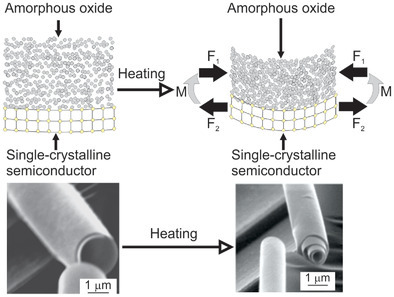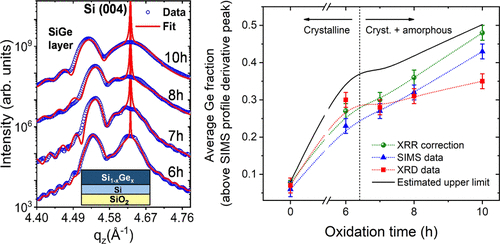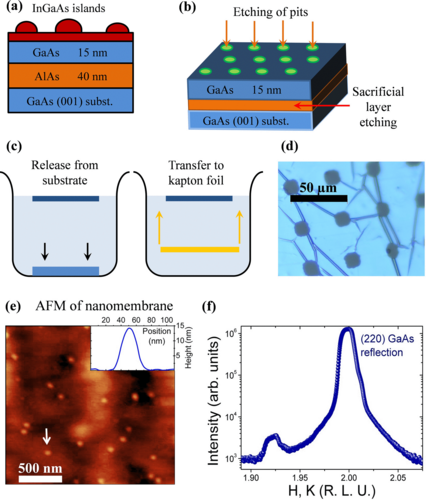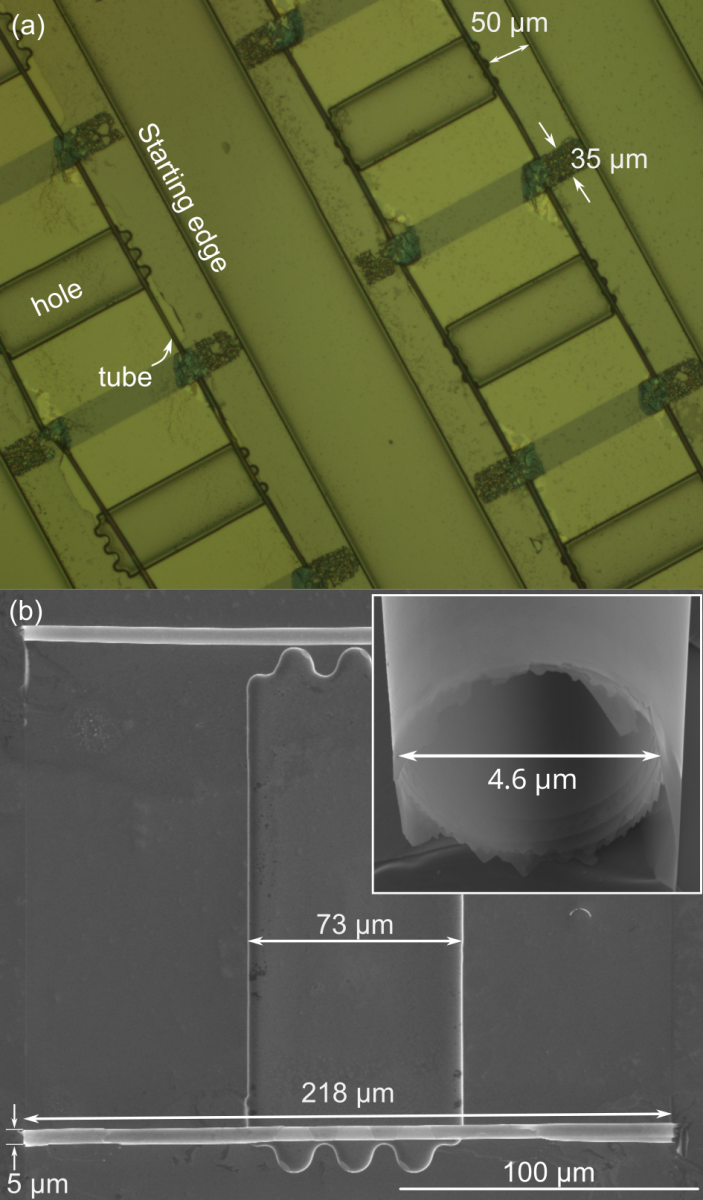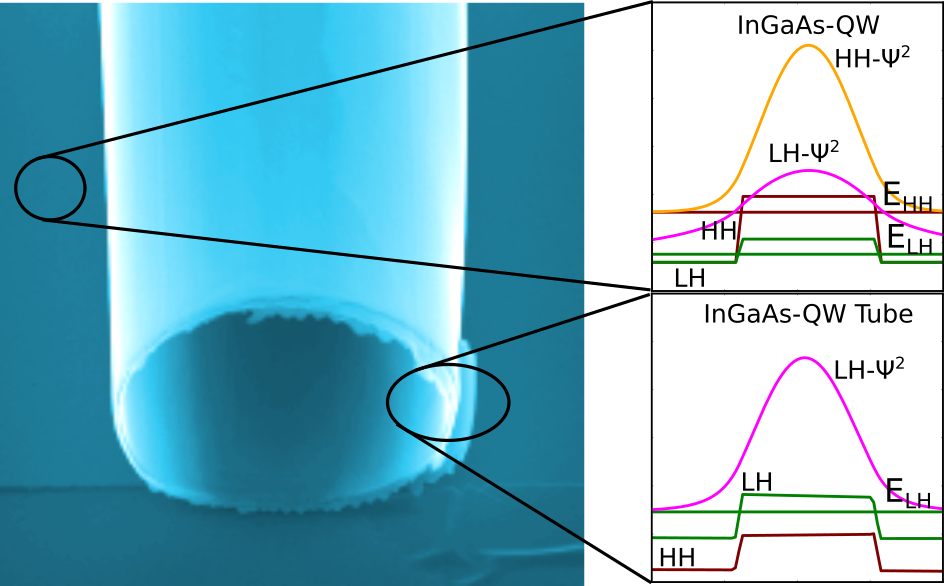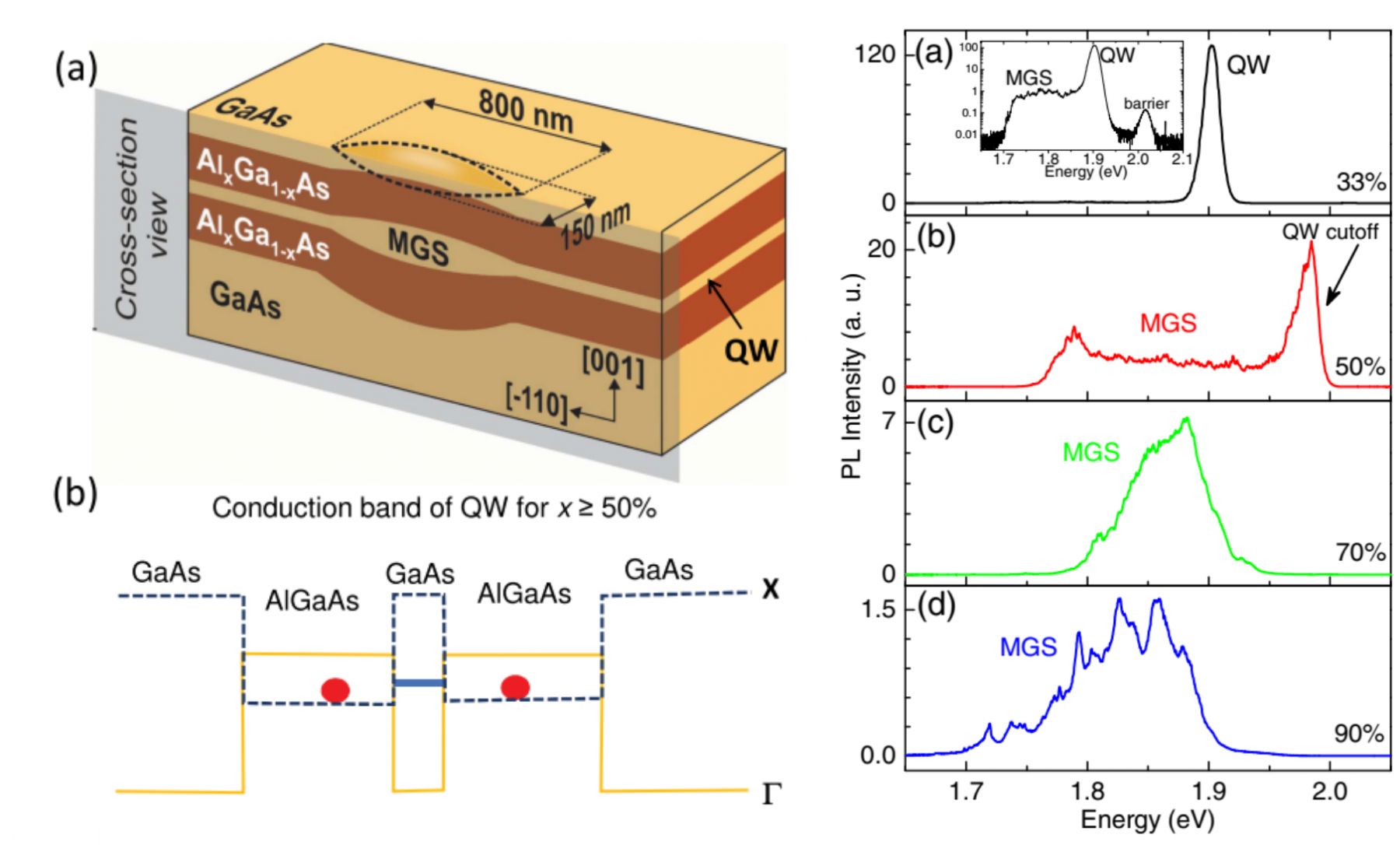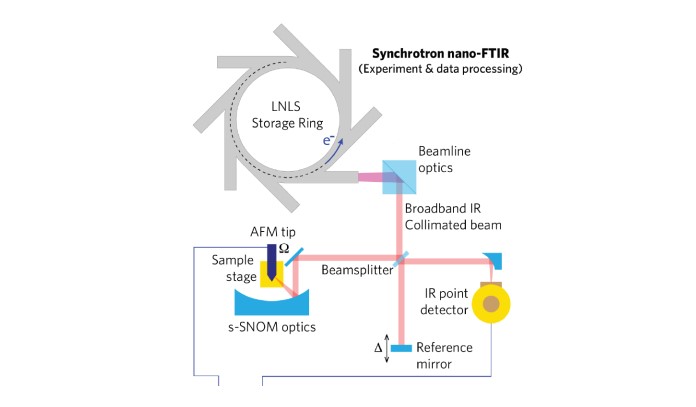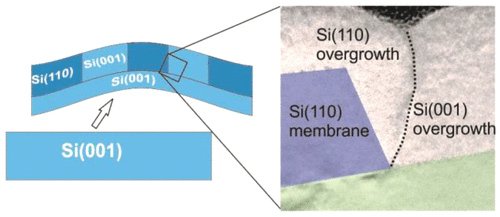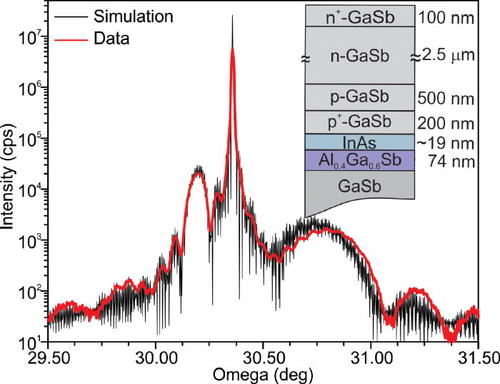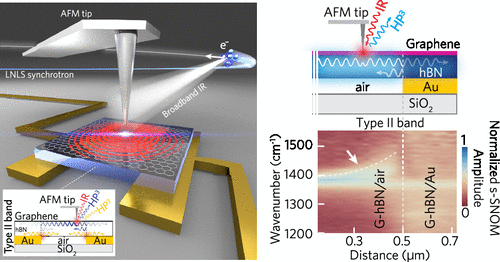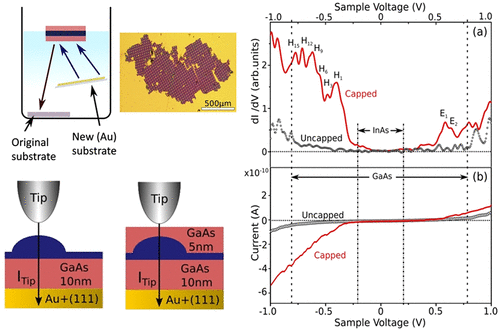Reconfiguration of Amorphous Complex Oxides: A Route to a Broad Range of Assembly Phenomena, Hybrid Materials, and Novel Functionalities
Reconfiguration of amorphous complex oxides provides a readily controllable source of stress that can be leveraged in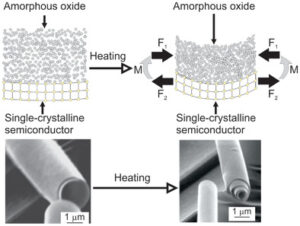 nanoscale assembly to access a broad range of 3D geometries and hybrid materials. An amorphous SrTiO3 layer on a Si:B/Si1−xGex:B heterostructure is reconfigured at the atomic scale upon heating, exhibiting a change in volume of ≈2% and accompanying biaxial stress. The Si:B/Si1−xGex:B bilayer is fabricated by molecular beam epitaxy, followed by sputter deposition of SrTiO3 at room temperature. The processes yield a hybrid oxide/semiconductor nanomembrane. Upon release from the substrate, the nanomembrane rolls up and has a curvature determined by the stress in the epitaxially grown Si:B/Si1−xGex:B heterostructure. Heating to 600 °C leads to a decrease of the radius of curvature consistent with the development of a large compressive biaxial stress during the reconfiguration of SrTiO3. The control of stresses via post-deposition processing provides a new route to the assembly of complex-oxide-based heterostructures in 3D geometry. The reconfiguration of metastable mechanical stressors enables i) synthesis of various types of strained superlattice structures that cannot be fabricated by direct growth and ii) technologies based on strain engineering of complex oxides via highly scalable lithographic processes and on large-area semiconductor substrates.
nanoscale assembly to access a broad range of 3D geometries and hybrid materials. An amorphous SrTiO3 layer on a Si:B/Si1−xGex:B heterostructure is reconfigured at the atomic scale upon heating, exhibiting a change in volume of ≈2% and accompanying biaxial stress. The Si:B/Si1−xGex:B bilayer is fabricated by molecular beam epitaxy, followed by sputter deposition of SrTiO3 at room temperature. The processes yield a hybrid oxide/semiconductor nanomembrane. Upon release from the substrate, the nanomembrane rolls up and has a curvature determined by the stress in the epitaxially grown Si:B/Si1−xGex:B heterostructure. Heating to 600 °C leads to a decrease of the radius of curvature consistent with the development of a large compressive biaxial stress during the reconfiguration of SrTiO3. The control of stresses via post-deposition processing provides a new route to the assembly of complex-oxide-based heterostructures in 3D geometry. The reconfiguration of metastable mechanical stressors enables i) synthesis of various types of strained superlattice structures that cannot be fabricated by direct growth and ii) technologies based on strain engineering of complex oxides via highly scalable lithographic processes and on large-area semiconductor substrates.
Divya J. Prakash, Yajin Chen, Mengistie L. Debasu, Donald E. Savage, Chaiyapat Tangpatjaroen, Christoph Deneke, Angelo Malachias, Adam D. Alfieri, Omar Elleuch, Kaddour Lekhal, Izabela Szlufarska, Paul G. Evans, Francesca Cavallo
Small 18, 2105424 (2022)
DOI: 10.1002/smll.202105424

